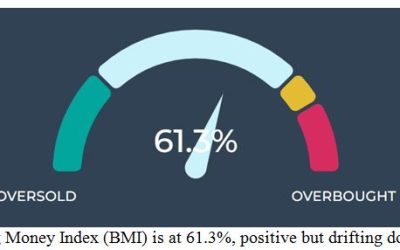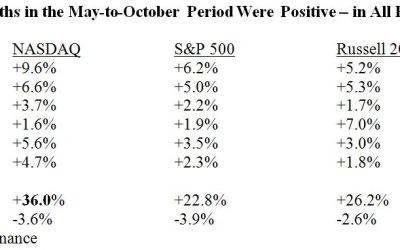by Bryan Perry
November 4, 2025
As the market trends higher, led by the artificial intelligence (AI) boom, there is a more cautionary narrative regarding the labor market and whether the government shutdown and lack of reliable data is masking a more serious decline in job losses than what is being reported by high-profile corporations.
In late October, tens of thousands of layoffs have been announced across major sectors, with big-name companies leading the way. Over 112,000-technology jobs alone have been eliminated so far this year.
Just during October, UPS announced 48,000 job cuts, Amazon 14,000, Intel 24,000, Nestle 16,000, Accenture 11,000 and Novo Nordisk 9,000. Among smaller cuts, Applied Materials cut 1,444, Target 1,000, Charter Telecom, 1,200 and CBS/Paramount 1,000. Beyond these corporations cutting their staff, others have stopped hiring, as managers have been instructed to avoid hiring unless absolutely necessary.
It is not just S&P 500 firms slashing jobs and issuing hiring freezes. Small to medium sized businesses are in the same employee reduction and no-hire posture. We know that because companies are required to post notices for job cuts, under the Worker Adjustment and Retraining Notification (WARN) Act. WARN notices are formal alerts that employers must file when planning any large-scale layoffs or plant closures.
WARN filings and state-level data show a rising trend in small and medium-sized business (SMB) layoffs through October and early November 2025. WARN notices tell us they are laying off workers, especially in manufacturing, retail, and logistics. In my normally healthy Virgina job market, dozens of SMBs have filed WARN (layoff) notices, including regional manufacturers, food processors and logistics firms.
In October 2025, over 3,800 WARN notices were filed across the United States, affecting more than 250,000 employees. This marks one of the highest monthly totals in recent years. Sectors impacted the most are logistics, tech, retail and manufacturing. California and New York were at the top of WARN lists, which are a leading indicator of labor market softening, despite strong Q3 earnings in some sectors.
Over the near term, a rising unemployment rate is a major catalyst for future rate cuts, as the Fed’s dual mandate includes low unemployment and low inflation to promote maximum employment and price stability. These two goals guide its policy decisions, such as setting interest rates and managing inflation.
Despite the government shutdown delaying or obscuring comprehensive labor data, private sources and high-frequency indicators reveal some obvious signs of a weakening U.S. job market, including rising unemployment claims, falling payroll growth and a surge in corporate layoffs. ADP reported a 32,000-job drop in private-sector payrolls for September, the largest decline since March 2023, and Bank of America detected a 10% annual increase in unemployment payments via their transaction data.
Graphs are for illustrative and discussion purposes only. Please read important disclosures at the end of this commentary.
In its October 29, 2025 FOMC policy statement, the Federal Reserve explicitly acknowledged that “Downside risks to employment rose in recent months,” citing slower job gains and a softening labor market. This marked a shift in tone, reinforcing the rationale behind its second consecutive rate cut. Fed Chair Powell reinforced this, saying, “Households’ perceptions of job availability and firms’ perceptions of hiring difficulty continue to decline in this less dynamic and somewhat softer labor market.”
What was most surprising to Wall Street and the larger investment community was the forward guidance Powell delivered, stating that another rate cut in December is “not a foregone conclusion,” reflecting some internal disagreement and uncertainty about labor trends. This statement seems behind the curve of where the job market is headed, almost naïve in the sense that when the government numbers are finally released, bad news might push rates lower but also ripple badly through a market that fears job erosion.
The government shutdown itself creates shocks, with furloughs, unpaid work and reduced spending, which can ripple through the economy and weaken hiring broadly. The shutdown came at a moment when the labor market risks reveal that the big picture for jobs is worse than the surface data suggests.
Graphs are for illustrative and discussion purposes only. Please read important disclosures at the end of this commentary.
How the market handles the eventual return of official jobs data will depend on the Fed’s reaction to the potentially weaker-than-forecast numbers. While Wall Street is busy calculating how and when the AI capex spending tsunami will be monetized, in terms of forward sales and earnings, the simple fact is that, on a factual basis, AI is eliminating jobs at a rising pace that at some point will grab the market’s attention. That is why the Fed must be highly proactive and support the consumer-led economy with further rate cuts – while thousands of Americans try to figure out what their next occupation will be.
Navellier & Associates; own Amazon (AMZN), and Intel (INTC), in managed accounts but does not own United Parcel services (UPS), Nestle, (NSRGY), Accenture (CAN), and Novo Nordisk (NVO), Applied Materials (AMAT), Target (TGT), Charter Communications (CHTR), or CBS/Paramount (PSKY). Bryan Perry does not personally own United Parcel services (UPS), Amazon (AMZN), Intel (INTC), Nestle, (NSRGY), Accenture (CAN), and Novo Nordisk (NVO), Applied Materials (AMAT), Target (TGT), Charter Communications (CHTR), or CBS/Paramount (PSKY).
The post 11-4-25: Opaque Jobs Data Could Trigger More Fed Rate Cuts appeared first on Navellier.








